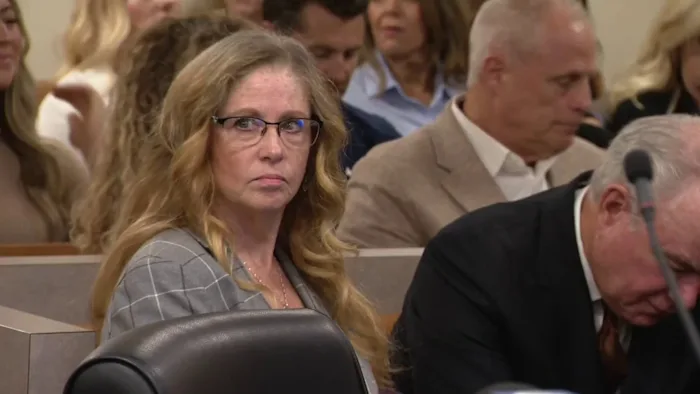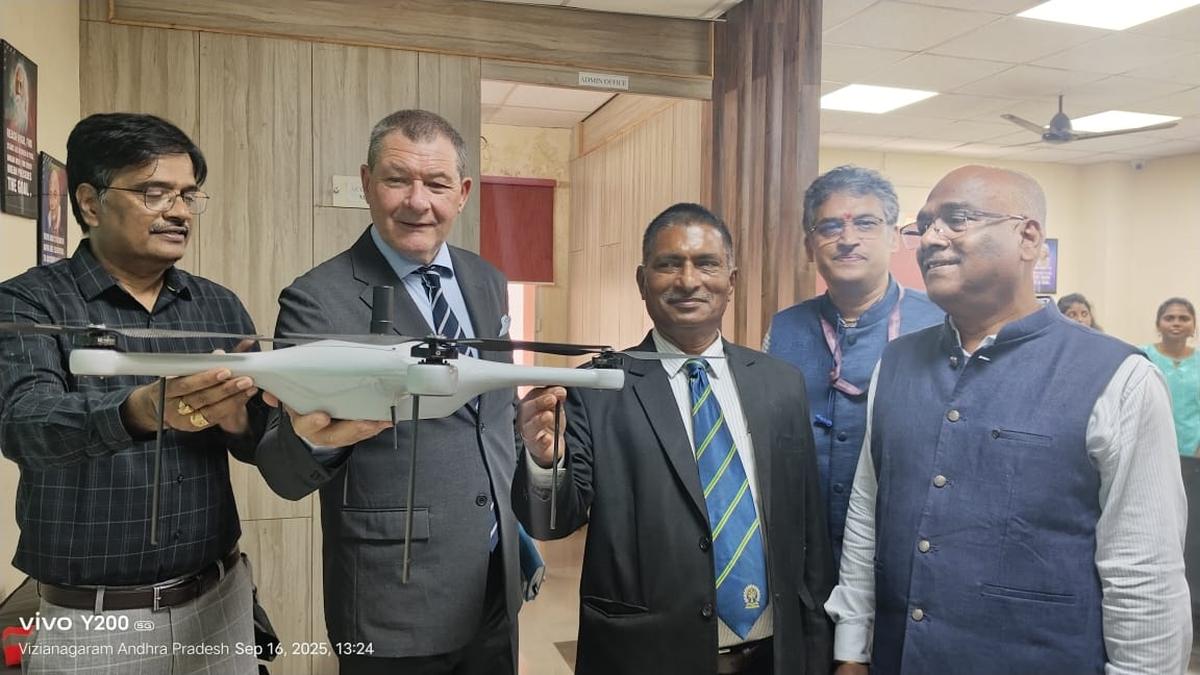
OAKLAND COUNTY, Mich. – The four workers charged in the death of a 5-year-old boy who was killed in a hyperbaric chamber explosion at a health care facility in Oakland County appeared in court on Monday and Tuesday.
Tamela Peterson, 58, of Brighton, Jeffrey Mosteller, 65, of Clinton Township, Gary Marken, 66, of Spring Arbor and Aleta Moffitt, 60, of Rochester Hills, were charged after Thomas Cooper was killed when the hyperbaric chamber he was receiving treatment in exploded at the Oxford Center in Troy on Jan. 31, 2025. The boy’s mother was also injured in the explosion.
Allegations
The workers are accused of ignoring safety protocols for operating hyperbaric chambers, including not using a grounding wrist strap, giving the 5-year-old boy a blanket straight from a running dryer, using polyester pillows and more.
They are also accused of rolling the chamber cycle count back and creating a “ticking time bomb.”
–> Read more: Deep dive into allegations against 4 Oakland County workers in 5-year-old’s hyperbaric chamber death
Preliminary hearing
The four workers appeared in court for their preliminary examinations to determine if a felony was committed and if there is probable cause to send them to trial.
Peterson, the Oxford Center’s founder and CEO, along with Mosteller, the safety manager, and Marken, the primary management assistant, were charged with second-degree murder.
They were also given the alternative charge of involuntary manslaughter, which means that a jury will decide which charge accurately fits their conduct.
Moffitt, who was allegedly operating the hyperbaric chamber at the time of the explosion, was charged with involuntary manslaughter and falsifying medical records.
Monday, Sept. 15
The first witness called to the stand was Tiffany Hosey, a Certified Hyperbaric Technologist (CHT) and Certified Hyperbaric and Wound Specialist (CHWS), who worked at the Oxford Center. She said she met Tamela Peterson at DMC Detroit Receiving Hospital when Peterson brought her daughter in for treatment.
She became friends with Peterson and Mosteller and reached out to the two, looking for a job when she was considering leaving DMC. She said she was hired at the Brighton Oxford Center in fall 2020 and worked there until spring 2024.
Hosey said her primary role was for research, but she would fill in for other jobs when people took breaks or vacations. While she did not work at the Oxford Center in Troy, she was familiar with the Troy staff. The defense argued that Hosey didn’t work at the Troy facility and that her statements would be considered hearsay as she didn’t have firsthand knowledge of how Troy was managed.
She said she was aware of the Troy Oxford Center and that Peterson was in charge of both facilities, and that when she went to the Troy facility, practices appeared to be the same for both.
“Almost every decision went through Tammy,” Hosey said. “Any time there was an issue or concern, Tammy was the person you brought it to, always.”
She said she knew Mosteller as a safety director at both centers.
“He was in charge of all safety protocols, staff training and maintenance,” Hosey said.
When asked how often training occurred, she said “rarely.”
She said she was let go after she expressed safety concerns, including patients in hyperbaric chambers being grounded. She said she questioned Mosteller regarding policies over the phone, through email, through Teams messages and in person.
She said she asked Peterson multiple times why grounding straps weren’t used. She reportedly said grounding straps presented suffocation risks and that Mosteller had done independent tests that “proved” they weren’t necessary.
The test reportedly had a staff member lying still on a stretcher without a sheet, not in a pressurized hyperbaric chamber. The test did not alleviate Hosey’s concerns.
“My primary concern was that we were putting grounding straps on the patients who are going inside the hyperbaric chamber,” Hosey said. “It is used to reduce the risk of fire due to static electricity.”
When asked what it would mean to have a fire inside a hyperbaric chamber, Hosey said, “It means death.”
The defense argued that there are multiple ways for a hyperbaric chamber to be grounded and that the manual instructions for checking to see if a chamber is grounded do not require it to be on or pressurized.
“It’s my opinion that no matter what test he did, no matter what the result was, it doesn’t supersede the national fire code or the chamber manufacturer’s recommendations,” Hosey said.
Hosey said she was fired after expressing her concerns regarding the safety protocols to human resources. She was called into Peterson’s office, where she reportedly asked her about her concerns about the grounding straps and Hosey said she attempted to explain why she felt that way, but Peterson shut her down, reportedly being told she was “uneducated and ill-informed.”
Mosteller reportedly backed Peterson up and reiterated to Hosey that the grounding straps weren’t necessary.
The defense questioned whether her experience before working at the Oxford Center, which focused on multiplace hyperbaric chambers, meant she might not be qualified to know what protocol is for how monoplace chambers should be used.
Additionally, Hosey was questioned about why she continued to work at the Oxford Center despite her safety concerns.
“For nearly four years, you continued your employment at the Oxford Center despite these safety concerns you had, correct?” a defense attorney asked, to which Hosey responded, “Correct.”
While speaking with Marken’s attorney, Hosey agreed that Marken was not part of the medical decisions and that he also believed in the therapy. The attorney compared him to a janitor, saying, “If you need a lightbulb, you get Gary.”
Hosey said that Marken’s job was more complicated than that of a janitor, but agreed that if she needed a lightbulb, he would be the employee she would contact.
Hosey agreed with the attorney that Marken didn’t have anything to do with the child’s death and that he spent most of his time at the Brighton facility and not the one in Troy.
She referred to him as Peterson’s “right-hand man,” but couldn’t list all of his responsibilities at the Oxford Center. However, she did testify that Marken did not make medical decisions.
Hosey said employees would document how long someone was in a hyperbaric chamber in real-time with pen and paper, which would then be logged into the records once they were out. She said they would sometimes write down a time when they assumed the chamber was pressurized, knowing it takes roughly 10 minutes to fully pressurize, leading to potentially incorrect records on how long someone was receiving treatment.
When asked if there were standard daily safety checks that were required, Hosey asked, “According to the Oxford Center or to experts?”
She went on to say that experts push for daily or weekly safety checks, but that she did not see the Oxford Center in Brighton perform them at that frequency. When asked if the Oxford Center had monthly safety checks, she answered, “There should be.”
When asked if she saw the Oxford Center in Brighton perform yearly safety checks, she said no.
When asked why she didn’t use the grounding straps, Hosey said it wasn’t protocol and that other patients might start asking why they aren’t using the straps. She said there was no real benefit to not using the grounding straps, as using them doesn’t cost much or use a significant amount of time.
Tuesday, Sept. 16
Testimonies resumed just after 9:30 a.m. Tuesday, beginning with Francois Burman, who has more than 30 years of experience in hyperbaric medicine.
Burman has taught courses in hyperbaric chambers since 1997 and has been involved with the Undersea and Hyperbaric Medical Society since 2001. He has also served as a committee member for the National Fire Protection Association (NFPA) since 2017.
The defense questioned Burman’s status as an expert, while prosecutors highlighted his work on NFPA guidelines. They noted concerns about his expertise in electronic engineering but said they would address those during testimony rather than beforehand.
Burman said the Undersea and Hyperbaric Medical Society contacted him to help police understand the medical technology at the Oxford Center in Troy.
He concluded the Oxford Center was not operating according to NFPA guidelines based on his observations and video evidence of the fire.
The defense argued Burman was not qualified to determine the fire’s cause since he is not a fire marshal.
Prosecutors countered that Burman is qualified to discuss factors leading up to the fire and share his opinions on what he believes happened.
Defense argued that the prosecutors were trying to “backdoor” an expert opinion regarding a topic he wasn’t considered an expert on, stating that Burman is an expert on preventing fires and what can cause fires, not what does cause fires.
Fire risks, monitoring
Burman explained the safety differences between monoplace and multiplace chambers. Multiplace chambers have less static electricity fire risk because they typically use 23% oxygen, while monoplace chambers can reach 100% oxygen, where fire can “spread faster than the speed of sound.”
Burman said that’s why the NFPA guidelines recommend that only two chambers be observed by one person because time is critical.
Then he was asked if it was OK if one technician was monitoring five or more chambers at once.
“It would be impossible to respond appropriately to a patient having a seizure,” Burman said. “If you’re observing Chamber 5 and there’s a seizure in Chamber 1, you will not see the seizure, you won’t hear anything from a speaker. You’d be oblivious to it.”
Burman testified that likely causes of fire in a monoplace chamber include electric devices, static electricity, and hand warmers — items that might be smuggled in. If nothing is smuggled in, static electricity is the main cause of fire, he said.
He explained that for a fire to exist, it needs something to burn, oxygen, and an ignition source. Burman noted that the increased oxygen and pressure inside a hyperbaric chamber lowers the temperature needed for ignition.
The grounding strap
Burman was asked if he had ever heard of a grounding strap being a choking or suffocation risk.
He said there has never been a recorded instance of that happening. If a child were choking on the strap, he said it would be relatively easy for an operator or technician to intervene before harm occurred. He added that people in a high-oxygen environment can survive for five to six minutes if suffocating and it can take about a minute for the chamber to depressurize.
He said that while a grounding strap doesn’t eliminate the risk of discharge, it reduces it to being nearly impossible. He added that he would never allow a child in a monoplace chamber without a grounding strap.
“The risk is just too high,” Burman said. “There’s no logical reason to do that.”
Burman said he saw video of what happened at the police station before he went to inspect the Oxford Center in Troy in person. He said the video he saw showed that the boy was not checked to see if he was grounded before treatment began.
Inside the hyperbaric chamber with the boy were reportedly a pillow, a sheet, and a gray blanket. Burman said he saw the boy move around inside the chamber five or six times, enough to pull the sheet off the mattress. This movement, he believes, contributed to the build-up of a static charge that would have been dissipated safely if the boy had been grounded. Instead, when his knee got close to the grounded mattress, where the sheet was pulled up, there was a visible spark.
“Within the next second, everything inside the chamber was alight,” said Burman.
When asked if a grounding strap would prevent static discharge, he said yes. The built-up charge would go down the path of least resistance, which would have been the grounding strap if one were present. Without one, he said, the charge jumped through the air as a spark to the grounded mattress when his knee got within a few millimeters. To prevent a charge, one would have to be in contact with a conductive surface or grounded at all times.
Burman said when he visited the Oxford Center, he learned the pillows used in the chambers had 100% polyester fillings with cotton pillowcases, which can build and cause static charges.
“When it rubs against the cotton, that’s when you start stripping off electrons and generating a charge,” he said.
Multiple defense questions focused on possible risks involving hyperbaric chambers and static electricity, which Burman continually answered would be mitigated by a properly grounded patient wearing a grounding strap.
When asked if he could think of anything besides static build-up that could have ignited the chamber, Burman stated, “I didn’t see anything else and I went into this looking.”
The third witness to speak was Andrew Melnyczenko, the technical and safety director of the hyperbaric and altitude medicine program at the Mayo Clinic in Minnesota. He has nearly 30 years of experience in hyperbaric medicine and chairs the Hyperbaric Oxygen Safety Committee for Undersea and Hyperbaric Medical Society. Melnyczenko has also taught safety courses for medical professionals and served in the U.S. Air Force as an aerospace physiology technician.
The defense argued that Melnyczenko didn’t have qualifications related to fire prevention and that there was little he could say that they hadn’t already heard from Burman. The prosecution argued that there can be more than one expert in any given field and that Melnyczenko would primarily focus on what parts of the hyperbaric chamber’s manual that were allegedly ignored by people at the Oxford Center.
The judge allowed the prosecution to proceed with Melnyczenk as a proposed expert, but limited redundant testimony and left specific admissibility disputes to be resolved as they’re presented.
Melnyczenk will return to testify for the next court hearing, expected to take place in December.



